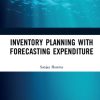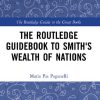Tourism Economics and Policy 2nd Edition by Larry Dwyer, Peter Forsyth, Wayne Dwyer 1845417313 9781845417314
$50.00 Original price was: $50.00.$25.00Current price is: $25.00.
Tourism Economics and Policy 2nd Edition by Larry Dwyer, Peter Forsyth, Wayne Dwyer – Ebook PDF Instant Download/Delivery: 1845417313, 9781845417314
Full download Tourism Economics and Policy 2nd Edition after payment

Product details:
ISBN 10: 1845417313
ISBN 13: 9781845417314
Author: Larry Dwyer, Peter Forsyth, Wayne Dwyer
Since the publication of the first edition of this seminal textbook, the tourism economics landscape has undergone many changes. In this concise revised edition, the authors have incorporated new approaches and ideas influencing tourism economics and policy. This includes discussions of the implications of the sharing economy and its effect on industry structure in accommodation and transport, and Artificial Intelligence (AI) techniques that are being increasingly employed in tourism forecasting. It also includes new material on surface and marine transport, resident quality of life issues, the price mechanism, the economic contribution of tourism, tourism and economic growth, and tourism and sustainable development. It remains an important and accessible text for students, researchers and practitioners in tourism economics and tourism policy.
Tourism Economics and Policy 2nd Table of contents:
1. The Demand for Tourism
1.1 Introduction
1.2 Factors Influencing Tourism Demand
1.2.1 Demand for tourism
1.2.2 Demand for a tourism product
1.3 Tourism Demand and Elasticity
1.3.1 Price elasticity of demand
1.3.2 Income elasticity of demand
1.3.3 Cross-price elasticity of demand
1.3.4 Marketing (advertising) elasticity of demand
1.4 Measuring Demand for International Tourism Arrivals
1.4.1 Dependent variables
1.4.2 Independent (explanatory) variables
1.4.3 Statistical testing
1.5 Conclusions
2. Tourism Supply
2.1 Introduction
2.1.1 Tourism products are not like other products
2.2 Factors Influencing Tourism Supply
2.2.1 Tourism supply and price
2.2.2 Tourism supply and non-price factors
2.3 Tourism Supply and Elasticity
2.4 Production, Costs and Supply
2.4.1 Production
2.4.2 Costs
2.4.3 The relationship between production and costs
2.4.4 External economies
2.4.5 Economies of scale versus economies of scope
2.5 Private Costs and Social Costs in Tourism
2.6 Supply Chain Management
2.6.1 Supply chain
2.7 Conclusions and Policy
3. The Price Mechanism
3.1 Introduction
3.2 The Price Mechanism
3.2.1 Excess demand
3.2.2 Excess supply
3.3 Changes in Equilibrium Price
3.3.1 Changes in demand
3.3.2 Changes in supply
3.3.3 Changes in both demand and supply
3.4 Outcome of Market Equilibrium
3.4.1 Economic efficiency
3.4.2 Welfare maximization: consumer and producer surplus
3.5 Limitations of the Price Mechanism
3.5.1 Market power influences prices
3.5.2 Consumer sovereignty is less powerful than often assumed
3.5.3 Imperfect information
3.5.4 Economic inequality
3.5.5 Externalities
3.5.6 Economic instability and government intervention in markets
3.6 Conclusions and Policy
4. Tourism and Market Structure
4.1 Introduction
4.2 Market Structure
4.2.1 Perfect competition
4.2.2 Monopoly
4.2.3 Monopolistic competition
4.2.4 Oligopoly
4.3 A Framework for Policy Analysis: S-C-P
4.3.1 Market structure
4.3.2 Conduct
4.3.3 Performance
4.3.4 Public policy
4.3.5 Limitations of S-C-P framework
4.4 Rise of the Sharing Economy
4.5 Conclusions and Policy
5. Strategic Pricing in Tourism
5.1 Introduction
5.2 Cost-Based Pricing Strategies
5.2.1 Cost-plus (mark-up) pricing
5.2.2 Pricing for profit maximization
5.2.3 Marginal cost pricing
5.2.4 Peak load pricing
5.3 Market-Based Pricing Strategies
5.3.1 Price discrimination
5.3.2 Two-part tariff
5.3.3 Price skimming
5.3.4 Penetration pricing
5.3.5 Loss leader pricing
5.3.6 Promotional pricing
5.3.7 Bundling
5.4 Competition-Based Pricing
5.4.1 Price leadership
5.4.2 Predatory pricing
5.4.3 Transfer pricing
5.5 Non-Profit Goals
5.6 Conclusions and Policy
Tourism Forecasting
6. Forecasting Tourism Demand
6.1 Introduction
6.2 The Forecasting Process
6.3 Challenges to Tourism Forecasting
6.4 Forecasting Approaches
6.5 Quantitative Forecasting
6.5.1 Time series approaches to forecasting
6.5.2 Econometric (causal) approaches to forecasting
6.6 Qualitative Approaches to Forecasting
6.7 A Hybrid or Integrative Approach
6.8 The Future: Artificial Intelligence Approaches
6.9 Conclusions and Policy
Tourism’s Economic Contribution and Economic Impacts
7. The Economic Contribution of Tourism
7.1 Introduction
7.2 Tourism Increased Sales Revenues for Tourism-Related Businesses
7.2.1 Effects of increased inbound tourism expenditure on domestic tourism supply
7.3 Tourism Stimulates Local Production and Output
7.3.1 Direct effects
7.3.2 Indirect effects
7.3.3 Induced effects
7.3.4 Leakages from imports
7.4 Tourism Creates New Employment Opportunities
7.5 Tourism Generates Foreign Exchange Earnings
7.5.1 Gross versus net foreign exchange effects
7.6 Tourism Creates New Investment Opportunities
7.7 Tourism Increases Government Revenue
7.8 Tourism Assists Regional Development
7.9 Non-Economic Effects
7.10 Conclusions
8. Measuring Economic Contribution: Tourism Satellite Accounts
8.1 Introduction
8.2 Need for Improved Statistical Data
8.3 What is a Tourism Satellite Account?
8.4 TSA and the ‘Tourism Industry’
8.5 Constructing the TSA
8.6 Direct Versus Indirect Economic Contribution of Tourism
8.7 The Importance of TSA
8.8 Regional TSA
8.9 Updating TSA
8.10 TSA as a Basis for Policy
8.10.1 Measures of tourism yield
8.10.2 Tourism productivity estimates
8.10.3 Estimating the carbon footprint of tourism
8.11 Economic Contribution Versus Economic Impact
8.12 Conclusions and Policy
9. The Economic Impacts of Tourism
9.1 Introduction
9.2 The Purpose of Economic Impact Analysis (EIA)
9.3 The Tourism Multiplier
9.3.1 Multipliers based on input-output models
9.3.2 SAM multipliers
9.4 Factors Limiting Tourism’s Multiplier Effects
9.4.1 Factor supply constraints
9.4.2 Crowding-out effects
9.4.3 Exchange rate changes
9.4.4 Government fiscal policy stance
9.5 EIA Using Computable General Equilibrium Modelling
9.6 Applications of CGE Modelling to Tourism
9.6.1 Economic impacts of changes in inbound tourism
9.6.2 Economic impacts of tourism crises
9.6.3 Tourism and poverty alleviation
9.6.4 Assessing tourism policy
9.6.5 Economic impacts of special events
9.7 EIA and Policy Analysis
9.7.1 The importance of general equilibrium analysis
9.7.2 Impacts are not benefits
9.8 Conclusions and Policy
10. Economic Evaluation of Special Events
10.1 Introduction
10.2 The Logic of Government Support for Special Events
10.3 Economic Evaluation of Special Events: General Issues
10.3.1 Setting the boundaries of the host region for the event
10.3.2 Estimating ‘new’ expenditure
10.4 The Economic Impacts of an Event
10.5 Challenges to Common Practice Event Assessment Using Standard EIA
10.5.1 Event ‘multipliers’
10.5.2 Relevance of the labour market
10.5.3 Treatment of construction expenditure
10.5.4 Treatment of taxes and subsidies
10.6 CGE Modelling of Special Events
10.6.1 Economic impact assessment of the Melbourne Formula One Grand Prix: An example of a CGE study
10.7 Wider Effects of Special Events
10.8 Cost-Benefit Assessment
10.8.1 Cost-benefit assessment of the Melbourne Formula One Grand Prix
10.9 Beyond Economic Aspects: Holistic Event Evaluation
10.9.1 An essential role for CGE modelling
10.9.2 An essential role for CBA
10.9.3 Treatment of non-economic impacts
10.10 Conclusions and Policy
Tourism Investment and Taxation
11. Investment by Tourism Firms
11.1 Introduction
11.2 Categories of Private Tourism Investment
11.2.1 Gross versus net investment
11.3 Types of Investment
11.4 Determinants of Investment
11.5 The Investment Demand Curve
11.5.1 Firm’s optimal level of investment
11.5.2 Shifts in investment demand
11.6 Sources of Capital Investment Financing
11.7 Selecting Capital Investment Projects
11.7.1 Estimating cash flows for the project proposals
11.7.2 Discounting
11.7.3 The accept–reject decision
11.7.4 Reviewing investment projects after implementation
11.8 Challenges Facing Private Tourism Investment
11.9 Foreign Direct Investment in Tourism
11.9.1 Destination ability to attract tourism FDI
11.9.2 Motives for FDI in tourism
11.10 Effects of FDI on Host Destination
11.10.1 Potential advantages of FDI to host destination
11.10.2 Potential disadvantages of FDI to host destination
11.11 Conclusions and Policy
12. Investment in Tourism Infrastructure
12.1 Introduction
12.2 Infrastructure Investment: Some General Issues
12.2.1 Pricing options for public utilities
12.2.2 The short-run problem: pricing congestion
12.2.3 Additional capacity
12.3 Investment Assessment
12.4 Infrastructure Provision: The New Private Model
12.4.1 Regulating private infrastructure
12.4.2 Public–private partnerships
12.4.3 User pays
12.5 Environmental Constraints and Trade-Offs
12.6 Infrastructure and Tourism Growth: Necessary But Not Sufficient
12.7 Tourism Infrastructure in Developing Countries
12.8 Conclusions and Policy
13. Taxation of Tourism
13.1 Introduction
13.2 Types of Tourism Taxation
13.3 Tax Incidence
13.4 Arguments for Taxing Tourism
13.4.1 Exporting taxes to non-residents
13.4.2 Provision of public investment
13.4.3 Expansion and diversification of the tax base
13.4.4 Overcoming tax base erosion
13.4.5 Taxes to correct for environmental externalities
13.4.6 Taxes to promote tourism destinations
13.5 Arguments Against Tourism Taxation
13.5.1 Excess burden (deadweight loss)
13.5.2 Reduced price competitiveness and contraction of economic activity
13.5.3 Risk of excessive taxation of tourism globally
13.5.4 Retaliation
13.6 Principles of Intelligent Taxation
13.7 Conclusions and Policy
Tourism and Transport
14. Tourism and Transport
14.1 Introduction
14.2 Modes of Tourism Transport
14.2.1 Transport networks, gateways and hubs
14.2.2 Intermodality
14.3 Surface Transport
14.3.1 Motor vehicles
14.3.2 Bus
14.3.3 Rail
14.3.4 Public transport
14.3.5 Active travel
14.4 Maritime Transport
14.4.1 Estimating the economic contribution of a cruise ship visit
14.5 Aviation
14.5.1 Drivers of aviation growth
14.5.2 Challenges faced by aviation
14.6 Need for Integrated Transportation Planning to Support Tourism
14.7 Tourism Transport into the Future
14.8 Conclusions and Policy
Tourism and the Environment
15. Valuing Tourism’s Environmental Effects
15.1 Introduction
15.2 The Importance to Tourism of a Valued Environment
15.3 The Potential Impacts of Tourism on the Environment
15.4 Market Failure and its Sources
15.4.1 Lack of property rights to the environment
15.5 Private Goods
15.6 Public Goods
15.7 Club Goods
15.8 Common Goods
15.8.1 The tragedy of the commons
15.8.2 Solutions to the tragedy of the commons
15.9 Externalities
15.9.1 Negative externalities lead to over-production and over-consumption
15.9.2 Positive externalities lead to under-production and under-consumption
15.10 Valuing Environmental Resources: Total Economic Value
15.10.1 Direct use value
15.10.2 Indirect use value
15.10.3 Non-use value
15.11 Estimating the Non-Use Value of Environmental Amenities
15.11.1 Stated preference
15.11.2 Revealed preference
15.11.3 Imputed valuation
15.12 Conclusions and Policy
16. Economic Instruments to Address Tourism’s Environmental Effects
16.1 Introduction
16.2 Economic Instruments for Environmental Protection
16.2.1 The bargaining solution
16.2.2 Internalizing externalities
16.2.3 Regulation (direct controls)
16.2.4 Tax on output
16.2.5 Tax on emissions
16.2.6 Subsidies
16.2.7 Tradeable permits
16.3 Complementary Approaches to Environmental Management
16.3.1 Technology development for energy efficiency
16.3.2 Voluntary agreements
16.3.3 Education and information
16.3.4 New business models
16.3.5 Codes of conduct
16.4 Choosing Between Instruments
16.5 Tourism and Climate Change
16.5.1 Effect of climate change on economic growth
16.5.2 Tourism affects climate: tourism’s carbon footprint
16.5.3 Climate change affects tourism
16.6 Policy Responses to Climate Change
16.6.1 Mitigation policies
16.6.2 Adaptation policies
16.6.3 The Paris Accord
16.7 Challenges for Tourism Policymakers
16.7.1 Uncertainties
16.7.2 Developing environmental indicators
16.8 Conclusions and Policy
Tourism, Growth and Sustainability
17. Tourism and Economic Growth
17.1 Introduction
17.2 Economic Globalization
17.2.1 Characteristics of globalization
17.2.2 Concerns about globalization
17.3 Economic Growth
17.3.1 The effects of economic growth
17.3.2 Drivers of economic growth
17.4 Growth, Unemployment and Inflation
17.4.1 Inflation
17.4.2 Employment/unemployment
17.5 The Importance of Productivity
17.6 Growth-Led Tourism Versus Tourism-Led Growth
17.6.1 Growth-led tourism (GLT)
17.6.2 Tourism-led growth (TLG)
17.6.3 Constraints on both GLT and TLG
17.7 Does Tourism Growth Reduce Poverty?
17.8 Costs of Economic Growth
17.8.1 Growth mania
17.8.2 GDP is only a partial measure of economic wellbeing
17.9 Alternative Measures of Progress
17.10 Conclusions and Policy
18. Sustainable Tourism Development
18.1 Introduction
18.2 What is Meant by Sustainability?
18.3 Wealth, Wellbeing and Sustainability
18.4 ‘Weak’ and ‘Strong’ Sustainability
18.5 Sustaining and Enhancing Wellbeing
18.6 The Ecological Perspective
18.7 The Genuine Progress Indicator
18.8 Tourism and Sustainable Development Goals (SDG)
18.8.1 An ecological perspective on tourism stakeholder responsibilities in meeting SDGs
18.9 Measurement Challenges
18.9.1 Measuring stocks (wealth)
18.9.2 Measuring wellbeing
18.9.3 Measuring sustainability
18.9.4 Building a statistical base for sustainable tourism development: The MST index
18.10 Key Enablers of Sustainable Tourism Development
18.11 Conclusions and Policy
Destination Competitiveness
19. Destination Competitiveness
19.1 Introduction
19.2 Integrated Models of Destination Competitiveness
19.3 The Travel and Tourism Competitiveness Index
19.3.1 Construction of the TTCI
19.3.2 Key enablers of improved destination competitiveness
19.4 Challenges to Measuring Destination Competitiveness
19.5 Destination Competiveness by Niche Market
19.6 Destination Price Competitiveness
19.7 Measures of Destination Price Competitiveness
19.7.1 The Consumer Price Index
19.7.2 Price indexes of tourism bundles
19.7.3 Package tour prices
19.7.4 Tourism Trade Weighted Index
19.7.5 Purchasing power parity
19.7.6 Comprehensive destination price competitiveness index
19.7.7 Which indicator to use?
19.8 Destination Competitiveness and Resident Quality of Life
19.8.1 Measuring quality of life
19.8.2 Quality of life measurement and destination competitiveness
19.9 Conclusions and Policy
Future Directions
20. Future Directions for Research in Tourism Economics
20.1 Tourism Demand and Forecasting
20.2 Supply, Market Structure and Pricing
20.3 Measuring Tourism’s Economic Contribution, Impacts and Net Benefits
20.3.1 Tourism employment
20.3.2 Investment
20.3.3 Taxation
20.3.4 Tourism and transport
20.4 Tourism and Economic Growth
20.5 Sustainability and Tourism Growth
20.6 The Need for a Heterodox Approach
People also search for Tourism Economics and Policy 2nd:
6 economic principles
6th principle of economics
5 tourism policies
3 economics
Tags:
Larry Dwyer,Peter Forsyth,Wayne Dwyer,Tourism
You may also like…
History - World History
Erotica Love Erotic
Heart on Lockdown The Town of Fayetteville 13 1st Edition by Dixie Lynn Dwyer
Fiction - Women's Fiction
Cherry Hill 15 A Love to Kill For 1st Edition Dixie Lynn Dwyer
Romance - Contemporary Romance
Anything for Their Love 1st Edition by Dixie Lynn Dwyer ISBN 1642432873 9781642432879
Technique - Communication
Communication for Business and the Professions : Strategies and Skills, Seventh Edition Judith Dwyer
Technique - Communication
The Business Communication Handbook, Eleventh Edition Judith Dwyer
Romance - Romantic Westerns











